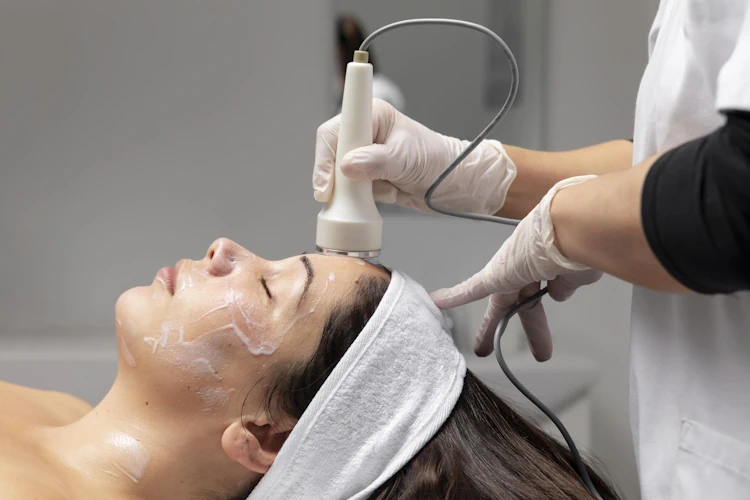Acne is a common skin condition that affects millions of people worldwide, causing distress and discomfort. While there are various treatment options available, including topical creams, oral medications, and lifestyle changes, some individuals may find relief through acne laser treatments. In this article, we’ll delve into the different types of acne laser treatments or cara hilangkan jerawat dengan cepat, how they work, their benefits, considerations before opting for them, and what to expect during and after the procedure.
Understanding Acne: Causes and Types
Before exploring acne laser treatments or cara nak hilangkan parut jerawat, it’s essential to understand the root causes of acne and the different types it manifests as. Acne can occur due to factors such as excess oil production, clogged pores, bacteria, hormonal changes, and inflammation. There are several types of acne, including whiteheads, blackheads, papules, pustules, nodules, and cysts, each with its characteristics and severity.
What are Acne Laser Treatments?
Acne laser treatments utilize focused laser beams to target and reduce the underlying causes of acne, such as bacteria and inflammation. These treatments work by either destroying the bacteria responsible for acne or reducing the production of oil in the skin. There are various types of acne laser treatments, including ablative lasers, non-ablative lasers, fractional lasers, and pulsed light therapy, each offering unique benefits and outcomes.

Benefits of Acne Laser Treatments
One of the primary benefits of acne laser treatments is their effectiveness in reducing acne lesions and improving overall skin texture. Additionally, these treatments typically have minimal side effects compared to other acne treatment options, such as oral medications, which may cause systemic side effects. Furthermore, the results of acne laser treatments are often long-lasting, providing patients with sustained improvements in their skin condition.
Considerations before Opting for Acne Laser Treatments
Before undergoing acne laser treatments, it’s essential to consider factors such as skin type, the severity of acne, and the cost and time commitment involved. Individuals with darker skin tones may be at a higher risk of pigmentation changes following laser treatments, while those with severe acne may require multiple sessions for optimal results.
Preparing for an Acne Laser Treatment
Preparing for an acne laser treatment typically involves scheduling a consultation with a dermatologist to assess your skin condition and discuss treatment options. Your dermatologist will provide you with pre-treatment instructions, which may include avoiding sun exposure, discontinuing certain skincare products, and taking medications as prescribed.
What to Expect During an Acne Laser Treatment
During an acne laser treatment session, you can expect your dermatologist to cleanse your skin thoroughly before applying a numbing cream or gel to minimize discomfort. The laser will then be directed onto the targeted areas of your skin, where it will deliver controlled pulses of light energy. You may experience sensations of warmth or tingling during the procedure, but these are typically well-tolerated.
Aftercare and Recovery
After undergoing an acne laser treatment, it’s crucial to follow your dermatologist’s post-treatment instructions carefully. This may include avoiding sun exposure, applying soothing skincare products, and taking any prescribed medications. While some individuals may experience mild redness or swelling following the procedure, these side effects are temporary and can be managed with proper care.
Alternatives to Acne Laser Treatments
While acne laser treatments can be effective for many individuals, they may not be suitable for everyone. Alternatives to acne laser treatments include topical treatments, such as retinoids and benzoyl peroxide, oral medications like antibiotics and isotretinoin, and other procedures like chemical peels and microdermabrasion. Your dermatologist can help determine the most appropriate treatment option based on your skin type and the severity of your acne.
FAQs
- How many sessions of laser treatment are typically needed to see results?
- The number of sessions required varies depending on the severity of your acne and the type of laser treatment used. In general, most individuals require multiple sessions spaced several weeks apart to achieve optimal results.
- Are acne laser treatments suitable for all skin types?
- While acne laser treatments can be effective for many individuals, they may not be suitable for those with darker skin tones, as they may be at a higher risk of pigmentation changes following treatment. It’s essential to consult with a dermatologist to determine the most suitable treatment option for your skin type.
- Do acne laser treatments have any downtime?
- Most acne laser treatments have minimal downtime, with patients able to resume their normal activities immediately following the procedure. However, you may experience mild redness or swelling, which typically resolves within a few days.
- Are the results of acne laser treatments permanent?
- While acne laser treatments can provide long-lasting results, they may not be permanent. Maintenance treatments may be necessary to sustain the improvements in your skin condition over time.
- Can acne laser treatments completely cure acne?
- While acne laser treatments can effectively reduce acne lesions and improve overall skin texture, they may not completely cure acne. It’s essential to follow a comprehensive skincare routine and consult with a dermatologist for ongoing management of your acne.